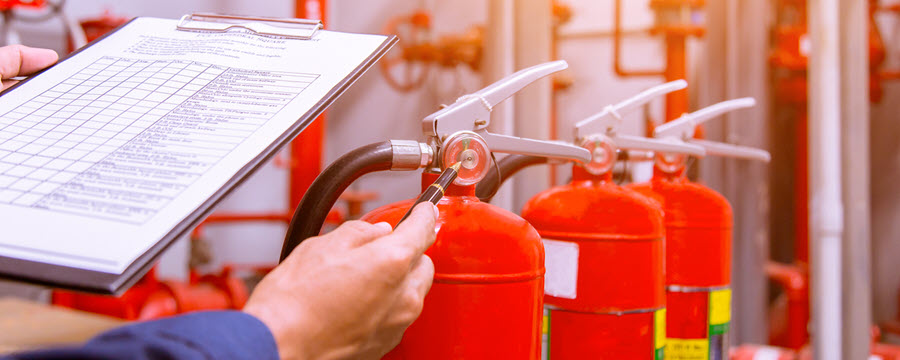
Inspecting Your Inspection Tags: A Crucial Starting Point

Accidents happen. Fires happen. But imagine running to a small fire in your building with a fire extinguisher only to find that when you pull the pin and squeeze… nothing. Now what? You look at the fire extinguisher and notice there is a tag on it. It’s a safety inspection tag that says the fire extinguisher should be inspected monthly, but it has not been marked in over a year. This oversight could be the difference between a small, quickly handled fire and a fire that risks the business as well as the workers in it.
Safety inspection tags serve a simple but essential purpose. They communicate when something was inspected and by whom. The problem is, they only work if they are used properly. As you set out to establish or improve your safety program, one smart move is to find and inspect all of your inspection tags. The only way to know if you’re keeping them up to date is to know how many you have and where they are. Then, make sure each one has someone in charge of it.
8 Common Inspection Tags
While every business is unique and may have different safety needs than other business, there are a few inspection tags that are pretty standard. These tags come with common workplace items that you can find in many businesses. As you start to inventory the tags in your workplace, start with these.
Fire Extinguishers – Visual inspections are required once per month. Look for physical damage such as corrosion, dents, or leakage. Check the gauge to make sure the pressure is within operating levels. A thorough maintenance inspection should be performed by a professional fire protection company at least once per year.
Ladders – Broken ladders are dangerous. While OSHA does not have a specific safety inspection requirement for ladders, it is a good idea to inspect them at least monthly. This is what OSHA has to say, “Ladders shall be inspected by a competent person for visible defects on a periodic basis and after any occurrence that could affect their safe use.”
Emergency Shower and Eyewash Station – These emergency stations should be fully inspected annually. It may surprise you to know that NSI/ISEA Z358.1, the most commonly referenced guideline for these stations, states that they should be tested on a weekly basis to ensure proper water flow. Of course, inspections should be noted on an inspection tag.
Hose reel – OSHA states, “The employer shall assure that hemp or linen hose on existing systems is unracked, physically inspected for deterioration, and reracked using a different fold pattern at least annually.”
Scaffolding – Faulty scaffolding is extremely dangerous. Therefore, OSHA recommends that it is inspected at the beginning of every work shift.
Scissor lifts – OSHA does not have specific requirements for scissor lifts, but categorizes them with mobile scaffolding, so inspections should be completed before every shift.
AED equipment – OSHA merely states that employers should inspect AEDs according to the manufacturer’s instructions, which is typically monthly.
Forklifts – OSHA doesn’t mess around when it comes to forklifts. The official requirement is as follows, “Inspections must take place either daily, or after every shift if the forklifts are being used around the clock.” An ideal place for an inspection tag.
Protect Your Workers and Your Company
Conducting regular inspections on your equipment, whether for daily use or emergencies, is a vital step towards protecting both your people and your company itself. Obviously, keeping things like ladders, scaffolding and forklifts in good working condition helps keep your employees safe. But, imagine if a worker or customer needs an AED and when someone reaches for it, there’s no charge. It could be a life or death situation. It’s important to understand that failing to conduct regular equipment inspections can not only endanger lives, but also open your company up to a large lawsuit if something should happen.
As mentioned above, the first step to keeping up with your inspection tags is to know how many you have, where they are, and who’s in charge of them. Once you have that in place, you can ensure that your inspections are being completed as required and properly documented.
Proper inspections can save lives, and inspection tags are the tool that lets you know inspections are happening as they should.

